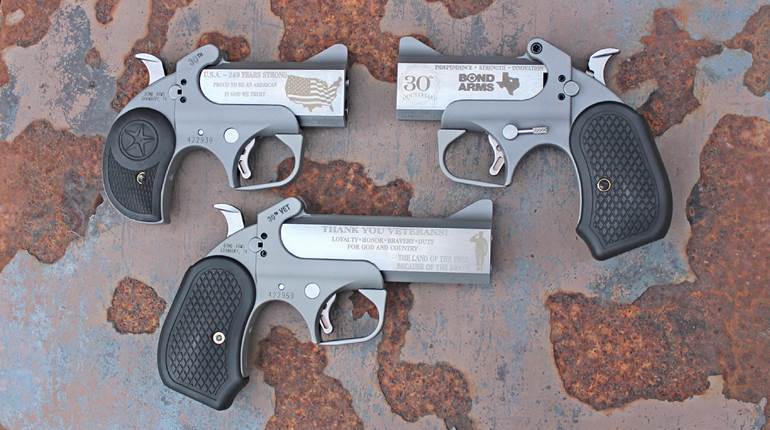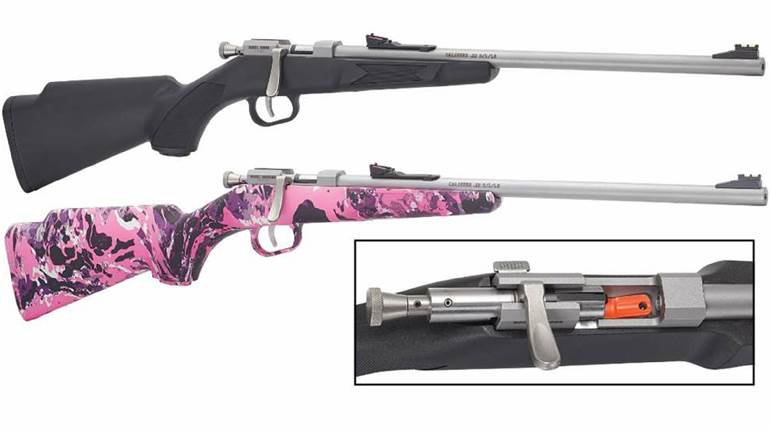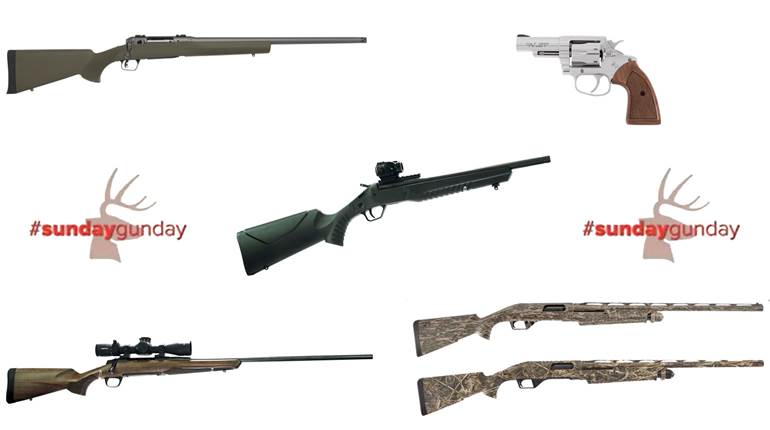
Despite the prolific popularity of particular pistol and revolver cartridges, several excellent options are hanging on around the edges of the handgun mainstream. Some of them never quite took off with the shooting public while others seemed to fade away. But several of these seemingly forgotten cartridges, like the ones listed here, have garnered a following which keeps them alive in the marketplace. Here are a few of the rounds that I enjoy working with that deserve a little more attention:
1) .32 NAA
In the early 2000s, North American Arms (NAA) teamed up with Corbon Ammunition and Ed Sanow to develop a new bottleneck pistol cartridge designed to enhance the stopping power of the Guardian semi-auto pocket pistol. Called the .32 NAA, it consists of a standard .380 ACP cartridge case necked down for a .32-caliber bullet. Corbon's 71-gr. full-metal jacket load yields around 1000-fps and 158-ft. lbs. of energy and the 60-gr. jacketed hollow point round runs at 1200-fps with 192-ft. lbs. of energy from the Guardian's 2.49" barrel. In 2012 Hornady introduced a new .32 NAA load topped with an 80-gr. FTX bullet, which flies at an average of 1000-fps with 178-ft. lbs. of energy. While the .32 NAA does not out perform larger cartridges, like the 9 mm, it does exceed the power levels of many standard .380 ACP loads while producing a reduced level of felt recoil. 
Although the .32 NAA Guardian pistol and ammunition enjoy steady enough sales to keep them both in production, the cartridge has yet to be widely adopted by other gun manufacturers. Despite the fact that this little bottleneck round is a solid performer, many Americans seem to be shying away from anything smaller than a .38 caliber. The variety and availability of .380 ACP ammunition, and the growing number of 9 mm pocket pistols, are factors likely to keep the .32 NAA a niche cartridge.
2) .327 Federal Magnum
Launched in 2008, the .327 Fed. Mag. cartridge is the result of a collaboration between Ruger and Federal Ammunition to develop a hot, slender revolver round that would allow for six chambers in small revolvers that usually only have room for five. The parent case for the .327 Fed. Mag. is the .32 H&R Mag. but it is 0.125” longer to prevent it from chambering in .32 H&R firearms. Topped with .312-cal. bullets in weights ranging from 85 to 115 grs., the cartridge boasts listed velocities ranging from 1400 to 1500 fps. Ruger paired the new cartridge with a 3" barrel a 6-shot SP101, followed by a 7-shot GP100 and an 8-shot Blackhawk. Other gun companies, including Charter Arms, Smith & Wesson and Taurus soon jumped on board with their own revolvers. 
Unfortunately, this top-notch round fizzled early on. It suffered from the same case of .32-itis that afflicted the .32 NAA, seeming too small to be effective to the general shooting public. The early gun options were primarily snub-nosed revolvers for concealed carry. Although these guns offered six shots instead of five, the ammunition's performance from short barrels did not provide enough of a boost in power to supplant the ever popular .38 Spl. and .357 Mag. There was not much in the way of ammunition selection to begin with and the loads that were available shipped in limited supplies. To top things off, the new load arrived during a recession, which caused potential buyers to save their money for a rainy day or invest in calibers they already trusted.
Although most gunmakers have dropped the .327 Fed. models from their catalogs, the cartridge has maintained a strong, if small, following. Ruger has opted to keep the dream alive by offering two new revolvers chambered in this round. Last year the company released a Lipsey's exclusive 7-shot version of the Single-Seven. This year the 6-shot SP101 is back with a 4" barrel and adjustable sights. Factory loads are currently available from Federal (Speer, American Eagle) and Buffalo Bore.
3) .44 Special
Designed in 1907 by Smith & Wesson, the .44 Spl. was a smokeless powder cartridge paired with the company's new .44 Hand Ejector 1st Model "New Century" double-action revolver. Based on the black powder .44 Russian cartridge, the .44 Spl.'s case was lengthened by 0.125" to prevent the new cartridge from being placed in older, weaker guns. Although the original factory loads were not much more powerful than their black powder predecessors, handloaders soon realized that the .44 Spl. could be loaded to much higher velocities. 
By the mid 1950s, Elmer Keith and Smith & Wesson had officially launched a souped-up cartridge based on the .44 Spl. dubbed the .44 Mag. Although the .44 Mag. is a terrific round, its popularity resulted in many .44 Spl. revolvers falling out of production. Luckily, a few gun makers have kept the .44 Spl. in their catalogs, like the Charter Arms Bulldog and Ruger Blackhawk. But with other manufacturers, this caliber comes and goes, such as the Taurus 445 Ultralite and Smith & Wesson 696.
Of the cartridges discussed here, the .44 Spl. is by far the most popular. It's an accurate, low-recoil round to shoot in full-size .44 Mag. revolvers. Hot +P rounds topped with modern hollow points are potent stoppers in defensive revolvers. It's also a popular choice for cowboy action shooting competitions. Despite its fall from the limelight, the .44 Spl. is likely to be around for some time to come.
4) .480 Ruger
After producing the first commercially successful 6-shot double-action revolver for the .454 Casull in the 1990s, Ruger opted to chamber the next version of the Super Redhawk in a new proprietary round called the .480 Ruger. Developed in cooperation with Hornady, this cartridge is based on the powerful .475 Linebaugh. But instead of upping the power levels even more, the .480 Ruger was specifically designed to reduce felt recoil. The cartridge case is 0.21" shorter, topped with lighter (originally 325-gr.) .475-cal. bullets and is launched at a maximum pressure of 48,000 PSI instead of the .475 Linebaugh's maximum of 50,000 PSI. 
The initial response to the .480 Ruger was mixed with critics expressing disappointment at Ruger's choice to offer a "dumbed down" cartridge instead of adopting the .475 Linebaugh or coming up with something even bigger. Soon after Ruger’s release, Smith & Wesson launched the .500 X-frame revolvers which brought the who-makes-the-biggest-revolver competition to a screeching halt. This in addition to some mechanical issues caused the .480 Ruger Super Redhawk to soon disappear from dealers’ shelves.
However, .480 Ruger supporters recognize that it is a very well-balanced cartridge that produces a much more manageable level of felt recoil while retaining plenty of performance for hunting large and dangerous game. A couple of years ago, Ruger re-released the 6-shot Super Redhawk in a Standard 7.5" barrel version and a 2.5" barrel Alaskan Model. Factory loads are currently available from Hornady, Grizzly Cartridge Company, and Buffalo Bore.
Do you have a favorite forgotten cartridge? Tell us more about it in the comments below.






































